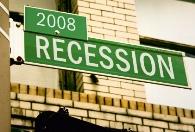 | « Back to article | Print this article |
The gripping story of Wall Street's collapse
 Halfway through the book, Lewis describes this scene in Las Vegas where, shortly before Wall Street's meltdown, investment bankers are gambling furiously, writes Kanika Datta.
Halfway through the book, Lewis describes this scene in Las Vegas where, shortly before Wall Street's meltdown, investment bankers are gambling furiously, writes Kanika Datta.
Gathered for an annual celebration of this super-profitable business, "thousands and thousands of serious financial professionals...were now playing craps with the money they had made off subprime mortgage bonds," he writes.
Craps was a potent metaphor for the business that brought Wall Street and the global economy to its knees: it "offered the player the illusion of control - after all, he rolled the dice - and a surface complexity that masked its deeper idiocy".
If Liar's Poker, Lewis' first book, was an outstanding and hilarious cautionary tale about Wall Street's greed, The Big Short shows how that unalloyed greed caused the world's most powerful banks to collectively suspend their critical faculties and create a market built on illusion.
Given the number of books on the subprime crisis that erupted after Lehman Brothers crashed, The Big Short is comparatively late. But it's easily among the best - if you haven't understood what the crisis is all about, this is the book to read.
As always, Lewis writes with forthright clarity, combining the virtues of investigative journalism with a novelist's flair for telling a compelling story.
The Big Short also turned out to be timely by default because of the current contretemps over Goldman Sachs' hedge fund manager John Paulson (who is mentioned in this book). Paulson made $20 billion for his investors and nearly $4 billion for himself by taking huge bets against subprime bonds (including those sold by his bank) via credit default swaps (CDSs).
Naturally, that caused huge losses for those on the other side of the trade who now claim they were duped.
This book tells the story of the subprime meltdown through contrarian traders like Paulson who gained a tactical advantage simply by assuming the worst.
They were among the minority who ended up making millions - quite legally - as Wall Street went up in flames. There were guys like Mike Burry, a one-eyed trader with Asberger's Syndrome.
Burry was one of the few people on earth who actually read the complex legal documents behind the "mezzanine" bonds that investment banks so eagerly bought. He cottoned on - as early as 2003 - that "the collateral damage (from the subprime boom) is likely to be orders of magnitude worse than anyone now considers".
Then there was Steve Eisman, a famously blunt and prescient hedge fund trader who systemically shorted the stocks of Wall Street banks on his doomsday assumption.
A third was Cornwall Capital, a garage affair run by three diffident "accidental capitalists" who pestered Wall Street firms to do business with them simply because they wanted to bet against their bonds (many traders irritably called them "Cornhole Capital", cornhole being American slang for sodomy)
Wall Street gambled on steadily rising values in the housing market to lend to, say, a Mexican strawberry picker with a low initial rate and a high reset rate.
Once the value of the house rose, the mortgage company offered him a second mortgage on the same teaser terms, which helped pay off the first (and now more expensive) loan, and so on in a giant Ponzi scheme that Eisman explicitly described as "Fuck the Poor".
Thus, there emerged a category of borrowers like the Vegas stripper who held five mortgages and Eisman's baby nanny who owned three apartments in New York.
As these traders soon realised, "a lot of people couldn't actually afford to pay their mortgages the old-fashioned way, and so the lenders were dreaming up new instruments to justify handing them new money They didn't keep the loans but sold them to Goldman Sachs and Morgan Stanley and Wells Fargo and the rest, which packaged them into bonds and sold them off. The end buyers of subprime mortgage were just 'dumb money'".
Burry, Eisman and the boys at Cornwall irritated the Wall Street cowboys because of their pessimistic outlook.
They were desperate to sell these risky, doomed mortgaged bonds short but were hard put to do so because they couldn't find tranches of these bonds to borrow - "you could buy them or not buy them but you couldn't bet explicitly against them; the market for subprime mortgages simply had no place for people who took a dim view of them".
So, they turned to CDSs, which Lewis likens to buying "cheap fire insurance on a house already in flames". Here's how he describes it: "You might pay $200,000 a year to a ten-year credit default swap on $100 million in General Electric bonds.
The most you could lose was $2 million: $200,000 for ten years. The most you could make was $100 million if General Electric defaulted on its debt any time in the next ten years and bond-holders recovered nothing. It was a zero-sum bet: if you made $100 million, the guy who sold you the credit default swap lost $100 million."
Lewis is similarly candid about rating agencies that assigned triple-A ratings on mortgage derivatives that were actually "worse than dogshit".
Far from being highly qualified economists working from amazing models that could never be gamed, Lewis says most rating agency staffers were those who Wall Street wouldn't hire and their "models" were essentially based on a kind of averaging that filtered out the bad news.
The Big Short story may not be new, but in Lewis' telling it's no less jaw-dropping and more than worth a buy.
THE BIG SHORT: Inside the doomsday machine
Micheal Lewis
Penguin 264 pages; Rs 599
